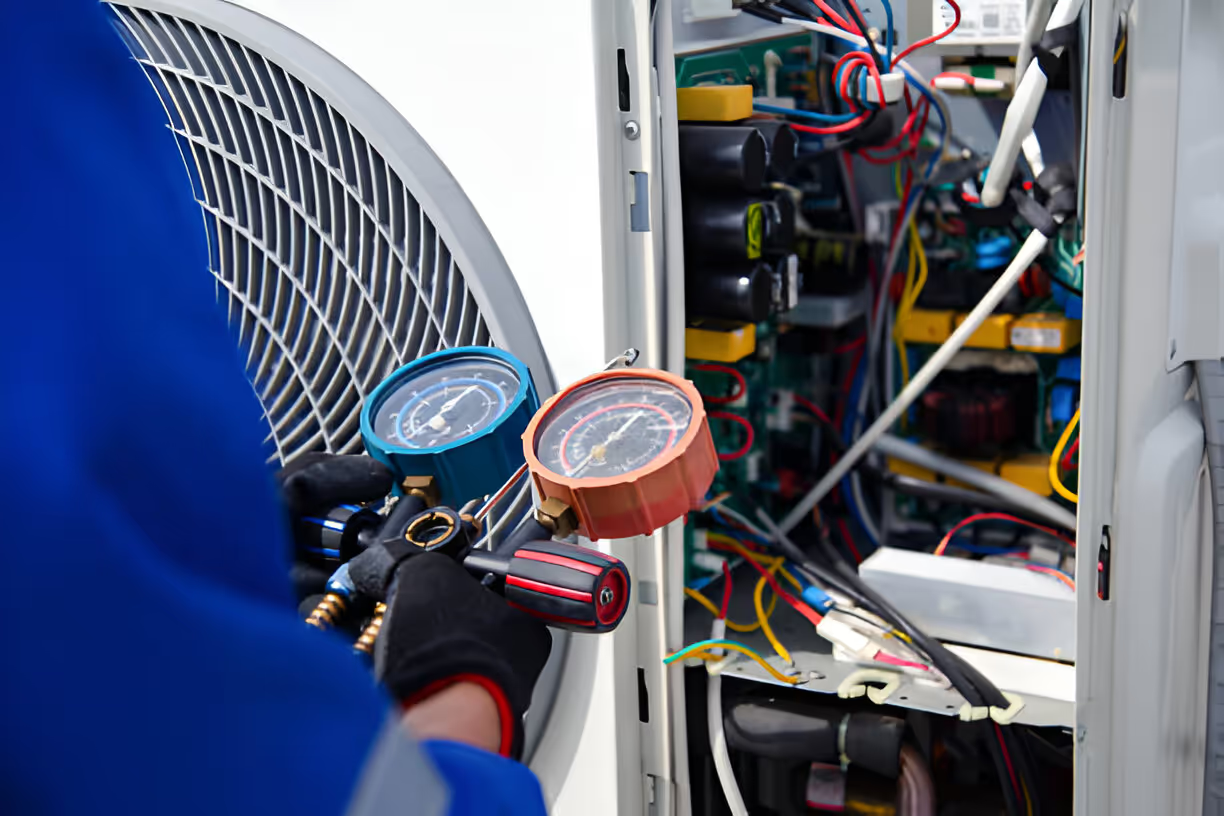Ductless Installation in Paradise Valley, AZ
Discover ductless installation in Paradise Valley, AZ for efficient, zoned comfort. Learn more about expert mini-split setups and schedule a consultation today.
Ductless Installation in Paradise Valley, AZ
Ductless installation in Paradise Valley, AZ provides an efficient, flexible way to cool and heat homes that were not built with central ductwork or where targeted zoning is preferred. In a desert climate with long, hot summers and occasional cool winters, ductless mini-split systems deliver rapid comfort, lower energy waste, and quieter operation. This page explains what a professional ductless installation looks like in Paradise Valley homes, common installation types and issues, the step-by-step process, what to expect in timelines, and recommended post-installation support and maintenance.

Why choose ductless mini-splits in Paradise Valley, AZ
- Zoned cooling and heating for multi-level homes, guest houses, pool houses, and bonus rooms common to the area.
- High SEER inverter compressors reduce energy use during extended cooling seasons.
- Minimal invasive installation for homes with historic features or limited attic space.
- Improved comfort control in rooms with variable solar exposure, high ceilings, or inconsistent duct performance.
Common ductless installation types and issues in Paradise Valley
- Single-zone mini-splits for casitas, garages converted to living space, or small additions.
- Multi-zone systems that serve several rooms with a single outdoor condensing unit.
- Retrofits where homeowners prefer no new ductwork because of space, aesthetics, or preservation of existing architecture.
- Common site challenges: masonry or stucco exterior walls, long line-set runs around pools or landscaping, HOA or neighborhood aesthetic restrictions, and electrical panel capacity limits.
- Performance issues often traced to incorrect sizing, improper line set routing, inadequate electrical supply, or poor commissioning after installation.
On-site assessment and equipment selection
A professional ductless installation begins with a thorough on-site assessment. Key steps include:
- Detailed load calculation tailored to Paradise Valley conditions: orientation, window solar gain, insulation, ceiling heights, and occupancy patterns.
- Room-by-room zoning plan to determine number of indoor heads and best mounting locations (wall, floor, or ceiling cassette).
- Electrical review for available breaker space, service size, and whether panel upgrades or dedicated circuits are required.
- Consideration of outdoor unit placement for noise, airflow, and HOA/neighbor sightline compliance.
- Selection of equipment based on capacity, efficiency rating, inverter technology, indoor head style, filtration options, and manufacturer warranty.
Line set and electrical installation specifics
Professional installation follows established refrigerant handling and electrical practices:
- Line sets (refrigerant tubing, insulation, and condensate drain) are sized and routed to minimize runs and preserve landscaping or finishes. Penetrations through stucco or masonry are sealed and flash-protected.
- Electrical work includes installing dedicated breakers, disconnects, and properly rated conduit and wiring to code. Outdoor unit mounting pads or brackets are secured to maintain clearance and vibration isolation.
- Refrigerant recovery, evacuation with vacuum pumps, and precise refrigerant charge are performed to manufacturer specifications. Technicians who handle refrigerant should be certified and use EPA-compliant practices.
Code compliance, permits, and inspections
Permits are typically required in Paradise Valley for HVAC installations. A compliant installation includes:
- Pulling local building and electrical permits and scheduling inspections when required by the authority having jurisdiction.
- Adhering to National Electric Code requirements and local amendments concerning wiring, disconnects, and equipment clearances.
- Ensuring outdoor unit placement meets setback and noise ordinances and that penetrations are weatherproofed to building code standards.
Commissioning and performance testing
Proper commissioning confirms the system operates as designed:
- Electrical inspections and verification of correct voltage and amperage.
- System evacuation and leak checks before charging.
- Measuring superheat and subcooling, airflow verification at indoor heads, and temperature delta testing to confirm cooling capacity.
- Demonstrating controls, remote or thermostat settings, and scheduling to the homeowner.
- Documenting final settings and providing manufacturer warranty registration details.
Expected timelines
- Single-zone installation: typically completed in one day for straightforward sites where electrical tie-in is simple and no structural obstacles exist.
- Multi-zone installations: commonly completed in one to three days depending on the number of indoor heads, length and complexity of line sets, electrical work, and any needed modifications to the home.
- Permitting and inspection time: local permit approval or scheduling an inspection can add additional days to weeks depending on municipal processing times. Planning for permit lead times is standard for a smooth project.
What affects cost (no pricing specifics)
Installation complexity drives cost: system capacity and efficiency, number of zones, required electrical upgrades, length and difficulty of line set runs through stucco or masonry, and whether additional mounting or structural work is needed. Equipment choices such as premium filtration, dehumidification options, and multi-zone outdoor units also influence overall investment. Local rebate programs or utility incentives may be available and can impact net cost.
Post-installation support and maintenance recommendations
To maintain peak performance and longevity in Paradise Valley conditions:
- Schedule an annual maintenance visit that includes refrigerant charge check, electrical inspection, condensate drain cleaning, indoor head and coil cleaning, and airflow verification.
- Change or clean filters regularly per manufacturer guidance—more frequently during dusty seasons or pool construction activity.
- Inspect line-set insulation and exterior seals annually to prevent heat gain and refrigerant line corrosion.
- Monitor system performance for unusual sounds, reduced airflow, or increased cycling and address issues promptly to avoid prolonged strain on the compressor.
- Consider remote monitoring or smart controls for zone scheduling and efficiency tracking in homes with variable occupancy patterns.
Long-term benefits for Paradise Valley homes
A professionally executed ductless installation delivers targeted comfort, improved energy efficiency, and flexibility for remodeling or new additions without the expense and disruption of ductwork. For homeowners in Paradise Valley, ductless systems can be an ideal solution for casitas, sunrooms, and rooms with high solar gain while preserving architectural integrity. With correct sizing, expert installation, code-compliant electrical work, and ongoing maintenance, a ductless mini-split system provides reliable, efficient comfort tailored to local climate and lifestyle needs.






